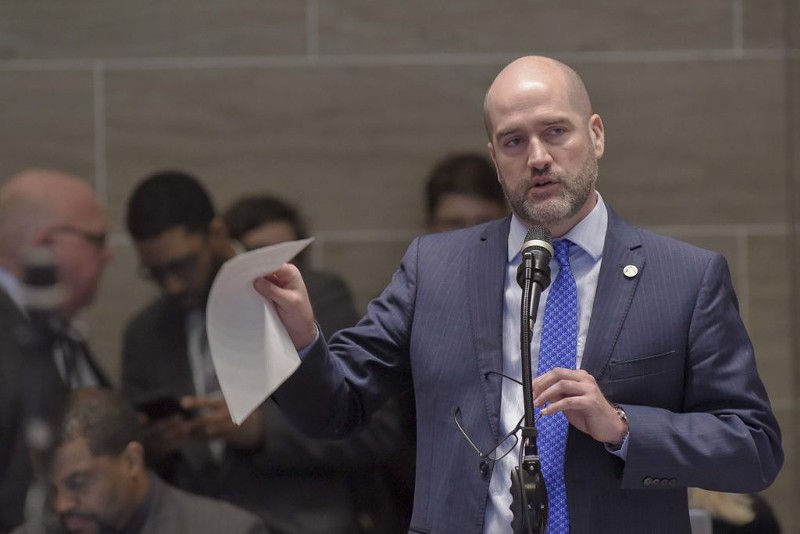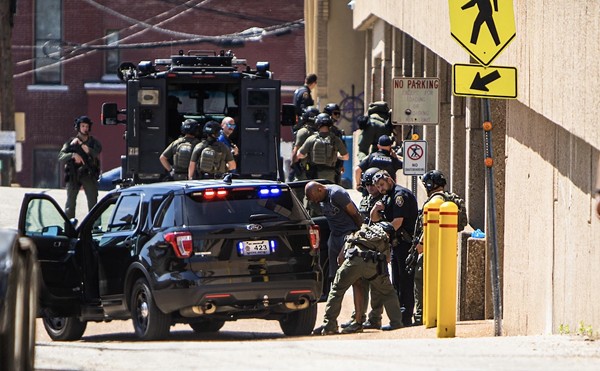
This story was originally published by the Missouri Independent.
A state senator from Kansas City is demanding answers about why an exhibit on the LGBTQ-rights movement was removed from the Missouri Capitol after only a few days on display.
Sen. Greg Razer, D-Kansas City, released a statement Thursday decrying the move, saying he was “disappointed and angry that Missouri State Parks would bend to pressure from those who want to see people like me stripped of our rights and our dignity as American citizens.”
The exhibit was part of the Missouri State Museum in the Capitol building which, which includes numerous exhibits on state history.
Missouri Gov. Mike Parson said later in the day, through a spokeswoman, that the exhibit was removed because it didn’t get approved by a state board he sits on. However, a review of five years of meeting minutes of that board going show no evidence that museum exhibits has ever been a topic of discussion.
Word of the removal spread on Facebook following a post by Uriah Stark, legislative aide for state Rep. Mitch Boggs, R-La Russell. He celebrated the decision to remove the exhibit, giving credit to Republican Reps. Ann Kelley of Lamar and Brian Seitz of Branson.
“Thanks to the efforts of several of our great elected officials, the exhibit has been removed from the Missouri State Museum! To God be the glory!” Stark posted.
Neither Kelley nor Seitz could be immediately reached for comment.
Connie Patterson, spokeswoman for the Department of Natural Resources — which oversees the museum — said state law requires the department to coordinate with the board of public buildings in regards to displays in the museum.
That process wasn’t followed, Patterson said, and the display was removed.
State law only requires the department coordinate its activities regarding the museum “as may be necessary for the display and exhibits of the museum and the memorial hall.”
Patterson also noted that Parson was unaware of the exhibit until “after receiving several complaints regarding the display.” But she didn’t respond to an email asking when the last time the board of public buildings discussed exhibits in the museum at one of its meetings.
Razer, the only openly gay member of the Missouri Senate, said the state owes the LGBTQ community answers “as to why they put this exhibit back in the closet.”
“There is nothing controversial about an exhibit that explains how members of the LGBT community fought to end persecution and demand rights as citizens,” Razer said. “This is nothing but ‘cancel culture’ coming from those who want the LGBT community to simply disappear into the shadows again.”
The exhibit, built by students in the University of Missouri-Kansas City’s public history program, explores the activism of gays and lesbians in the decades before Stonewall, including “Kansas City’s surprisingly pivotal role in helping to launch America’s gay rights movement. Focusing on ordinary people who accomplished extraordinary things, the exhibit explores how history is made.”
Editor's note: This story was updated after publication with more information.




